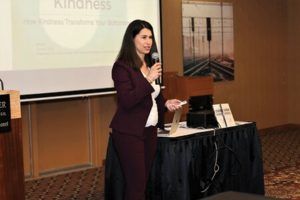
Avish Parashar is an improv comedian who recently spoke at the CTAA Tradeshow held Sept. 9-10, 2022. He uses his background as a comedian to teach audiences creativity, innovation and adaptability, and past audiences have included actors, directors, accountants, sales professionals and college students. Avish is also the author of two books, Improvise to Success and Say Yes, And!
The following article summarizes some of the material Avish presented at the conference.
Life is the ultimate improvisation. Thinking you can carry out every plan you make is an illusion, even though we like to pretend it isn’t. That’s why it is important to think like an improv artist who can take whatever happens and make it work as though the disruption was always part of the plan.
I like to play a game with audiences where I start to tell a story. Someone else holds a hotel-style call bell, and I start telling a story. Every time the bell dings, I change the last part of the story to something else. For example: “Two boys had a cat (ding) dog (ding) mouse (ding) emu.” It goes from there. You have to be quick and creative to make it work, and audiences find the process amusing and instructive.
What’s the best way to begin thinking like an improv artist?
There are three steps:
- Start with mindset
- Take it one small step at a time
- Say “yes, and” even though it makes things harder
Start With Mindset
The two key elements of the improviser’s mindset are to have fun and be willing to fail. Being playful is an important part of being creative, but it’s hard to be playful if you aren’t having fun. And big success usually involves taking risks. If you aren’t willing to fail, you aren’t likely to succeed.
It is hard to say “yes, and” when you are in a “yes, but” mindset. “Yes, and” can invite collaboration. “Yes, but” shuts collaboration down. Saying “yes, and” doesn’t mean allowing people to take advantage of you. It means looking for ways to take a problem and expand the number of possible solutions until you can see at least one solution that works for everybody.
Here’s an example. Suppose a tenant makes an unreasonable, outrageous demand. Even if you would be 100% justified in saying no, considering the demand and trying to find a way to make it work on both sides is still the right approach. Taking time to consider the demand lowers the tension, which means the tenant may stay longer than they would if you told them why you couldn’t agree and then went straight to a rejection.
Take It One Small Step at a Time
“Ding” happens in life the same way it happens in improv. In improv, we focus on what we can control: our one next step. You don’t need to take some massive action. Instead, you will make much faster progress by taking a step, seeing what happens, adjusting, then repeating the process. Trying to figure out everything before you start will slow you down.
Say “Yes, and” Even Though It Makes Things Harder
When life gets overwhelming, people naturally want things to be easier. We think that if things are easy, we can get motivated and engaged again. I suggest an alternative. Maybe the key is to make things harder in the area that matters.
You can do this by setting a goal you don’t know how to achieve and then learning, developing, trying, experimenting and using your creativity to figure out how to achieve it. Setting a difficult goal that matters to you can be the key to feeling energized and motivated again.
Summary
The improv takes care of itself if you have fun, accept the possibility of failure, and approach problems and roadblocks with a “yes, and” attitude. However, you can’t successfully improvise when faced with the unexpected if you don’t have a “yes, and” attitude.
You probably know where to start with changing your mindset. Most of us have a persistent “yes, but” trigger that prevents us from being more successful. We usually have an idea that keeps popping up, and we keep saying, “yes, but” to it.
When you switch to “yes, and,” that switch may be the very thing that will change everything about everything.









